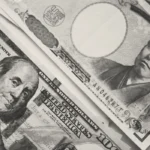Gold held below its highest in four months on Tuesday amid a strengthening dollar days before the probable launch of the European Central Banks quantitative easing program.
Comex gold for delivery in February was up 0.16% at $1 279.0 per troy ounce at 07:53 GMT, shifting in a daily range of $1 282.0 – $1 272.1. The precious metal settled at $1 276.9 on Friday, while floor trading on Monday was suspended due to the Martin Luther King Jr. holiday.
Investors will be observing the ECBs policy meeting, which is scheduled to be held on January 22, looking for clues whether or not the bank will announce a bond-buying program in order to boost inflation in the region.
“The market will be watching the ECB meeting on Thursday for any quantitative easing announcement and if announced we should see moderate demand for the yellow metal,” said MKS Group trader Sam Laughlin, cited by CNBC.
Traders are also concerned about the volatility in the European markets caused by speculations that Greece may be the first country to exit the euro zone. The Syriza party, which has promised to remove Berlin-imposed austerity policies and lead the country out of the 19-member group, has a lead over its rivals and is poised to win at the elections scheduled on January 25.
“The expectation is gold will move higher towards $1,300, however we are likely to see a profit taking driven pull back with support for such a move lower sitting around $1,250,” Mr. Laughlin added.
Assets in the SPDR Gold Trust, the biggest bullion-backed ETF, marked their biggest daily increase since May 2010 and climbed 13.74 tons on Friday to 730.89 tons. Changes in holdings typically move gold prices in the same direction.
The International Monetary Funds announcement on Tuesday spurred concerns over global growth and prompted investors to seek safety in the yellow metal.
The IMF said in a statement that it expects all major economies, except the US and Spain in Europe, to experience a slowdown in growth. The organization also reduced its projection of global growth for 2015 and 2016, with 0.3% for both years to 3.5% and 3.7% respectively.
The IMF also asked governments to maintain accommodative monetary policies and refrain from lifting real interest rates due to the risk of deflation caused by plunging oil prices.
Meanwhile, China stated that its economy has grown 7.3% over the fourth quarter of 2014 compared to the same period a year earlier. Many analysts had projected a bigger slowdown, but full-year growth at 7.4% still reached the lowest since 1990.
The announcement from China boosted Asian equities, the dollar also edged up capping golds gains amid weaker euro.
The US dollar index for settlement in March was up 0.18% at 93.055 at 07:47 GMT, holding in a daily range of 93.165-93.030. A stronger greenback makes dollar-denominated commodities more expensive for holders of foreign currencies and curbs their appeal as an alternative investment, and vice versa.
Pivot Points
According to Binary Tribune’s daily analysis, February gold’s central pivot point on the Comex stands at $1 277.0. If the contract breaks its first resistance level at $1 282.0, next barrier will be at $1 286.9. In case the second key resistance is broken, the precious metal may attempt to advance to $1 291.9.
If the contract manages to breach the S1 level at $1 272.1, it will next see support at $1 267.1. With this second key support broken, movement to the downside may extend to $1 262.2.





